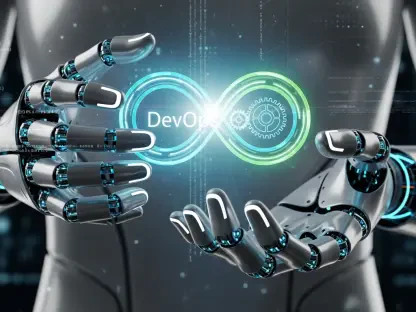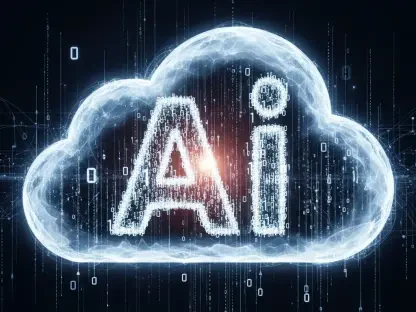In the ever-evolving landscape of artificial intelligence, integration APIs have emerged as pivotal advancements, driving innovation and efficiency across varied industries. With generative AI becoming more mainstream, the role of these APIs is expanding to enhance functionality, cross-platform integration, and cost management for organizations. This technological analysis delves into the multifaceted capabilities of AI Integration APIs, exploring their key features, performance metrics, challenges, and future outlook.
Navigating the World of AI Integration APIs
AI Integration APIs have fundamentally shifted how industries approach automation and machine learning. These APIs enable coherent integration of AI tools into existing systems, facilitating seamless interaction across various platforms. This integration is not just a technical enhancement but a core necessity in the broader technological setting, bridging the gap between standalone AI systems and comprehensive enterprise solutions. As companies strive to innovate faster, AI Integration APIs become crucial by providing the agility to modify and enhance AI functionalities rapidly.
These APIs are becoming increasingly relevant in today’s tech-driven world. They offer a structured way to connect disparate AI tools, allowing businesses to harness AI’s full potential effectively. By serving as conduits for AI interactions, these APIs play a critical role in advancing technological infrastructure, thereby broadening their appeal across different sectors. The growing dependency on AI Integration APIs underlines their importance as essential components for future-ready business models.
Diverse Capabilities of AI Integration APIs
Facilitating Natural Language Processing
Natural Language Processing (NLP) capabilities in AI Integration APIs have revolutionized how humans interact with technology. By enabling communication through everyday language, these APIs improve user engagement and accessibility. Zapier’s natural language actions exemplify this transformation, creating opportunities for more intuitive human-computer interactions that can lead to innovative outcomes unforeseen by traditional UI methods.
Enabling Comprehensive IoT Integration
In the rapidly expanding Internet of Things (IoT) landscape, APIs play a significant role in unifying virtual and physical worlds. APIs like Seam specialize in IoT integration, providing the infrastructure to control myriad devices from a centralized platform. This capability transforms real-world interactions into a cohesive digital experience, paving the way for enhanced system interconnectivity and user convenience.
Providing Access to Pretrained Models
The accessibility offered by APIs such as Hugging Face’s Transformers is a breakthrough in AI development timelines. Developers can leverage pretrained models built on robust platforms like PyTorch and TensorFlow. This access accelerates AI project timelines by allowing teams to build upon existing models instead of beginning from scratch, facilitating innovation and reducing time-to-market.
Facilitating Human-Machine Collaboration
The advent of APIs like HumanLayer signifies a shift toward more collaborative AI systems. By enabling AI agents to reach out to humans when deemed necessary, these APIs ensure optimal decision-making and resource utilization. This hybrid approach infuses human insight into automated systems, ensuring processes are both intelligent and human-centric.
Innovative Trends Shaping AI Integration APIs
Emerging trends in AI Integration APIs are reshaping the landscape of resource management and data analysis. OpenAI’s Batch API exemplifies the move toward more cost-efficient AI operations through delayed processing. Bluesky’s Firehose API, on the other hand, offers comprehensive sentiment analysis for social media, demonstrating the expanding application scope of AI in data-driven decision-making. These advancements indicate a significant tilt toward smarter and more refined AI-driven strategies.
Real-World Impact: Applications Across Industries
AI integration APIs have demonstrably enhanced operational efficiency across a myriad of sectors. Industries ranging from healthcare, finance, logistics, and beyond are leveraging these APIs for optimized workflow and decision-making processes. For instance, Signature API’s integration of legally binding digital signatures into workflows highlights automated authenticity checks, delivering efficiency and accountability in industries like legal and real estate services. These applications underscore the transformative impact of AI Integration APIs in driving innovation and setting new standards in industry practices.
Navigating Obstacles: Challenges and Limitations
While advancements in AI Integration APIs are noteworthy, challenges linger. Technical limitations, such as compatibility issues and latency, can impact performance. Furthermore, regulatory frameworks are struggling to keep pace with rapid technological changes, creating legal barriers. Additionally, market adoption can be hindered by economic factors limiting small businesses’ access to high-cost solutions. Ongoing development efforts aim to mitigate these challenges by focusing on standardized protocols and accessible pricing models to ensure more uniform adoption across industries.
Anticipating Future Developments
The future of AI Integration APIs is poised for significant evolution, with breakthroughs expected in areas such as autonomous decision-making and real-time analysis. Expanding the reach of AI functions through more intuitive APIs will likely lead to far-reaching impacts on productivity and innovation. As these advancements gain traction, businesses must ready themselves to integrate these next-gen tools while keeping an eye on ethical and privacy standards, ensuring the responsible development and deployment of AI technologies.
The Path Forward: Conclusions and Considerations
The review of AI Integration APIs has highlighted their broad potential in reshaping industries through enhanced functionality, practicality, and cost-effectiveness. These tools have steadily progressed from mere connectivity facilitators to robust platforms enhancing human-machine collaboration and resource management. As industries continue grappling with rapid technological change, AI Integration APIs emerge as critical enablers, promising ongoing transformation. Organizations should prepare for deeper integration of these APIs, ensuring they are strategically positioned to harness emerging AI capabilities fully.









